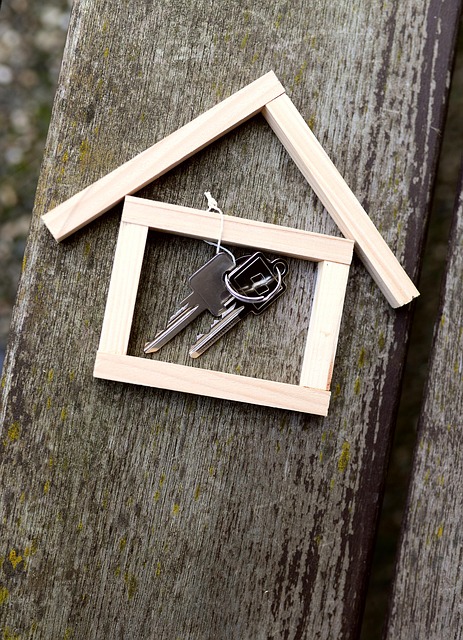Complete Guide to Composite Front Doors for Homeowners
Composite front doors have become increasingly popular among homeowners seeking the perfect balance of durability, security, and aesthetic appeal. These engineered doors combine multiple materials to create an entry solution that addresses many of the shortcomings found in traditional single-material doors. Understanding the construction, benefits, and selection criteria for composite doors can help you make an informed decision that enhances your home's curb appeal while providing long-lasting performance and security.

What Are the Key Features That Define a Composite Front Door?
Composite front doors are distinguished by their multi-layered construction and engineered design. The primary feature is their exceptional thermal efficiency, often achieving U-values as low as 0.8 W/m²K, which significantly reduces energy loss compared to traditional doors. Security features typically include multi-point locking systems, reinforced frames, and anti-snap cylinders that meet PAS 24 security standards.
Weather resistance stands out as another defining characteristic. These doors resist warping, cracking, and fading even under extreme temperature fluctuations and UV exposure. The low-maintenance aspect appeals to many homeowners, as composite doors typically require only occasional cleaning and don’t need regular painting or staining like wooden alternatives.
What Materials Are Commonly Used in Composite Door Construction?
The construction of composite doors involves several carefully selected materials working in harmony. The core typically consists of high-density polyurethane foam or timber, providing structural integrity and insulation properties. This core is often reinforced with galvanized steel or aluminum for additional strength and security.
The outer skin usually features Glass Reinforced Plastic (GRP) or fiberglass, chosen for its durability and ability to mimic natural textures like wood grain. Some manufacturers incorporate recycled materials, making these doors an environmentally conscious choice. The frame components often combine uPVC or composite materials with steel reinforcement, while weatherstripping utilizes high-grade rubber or thermoplastic elastomer seals to prevent air and water infiltration.
How Do Composite Front Doors Compare to Wood or Steel Options?
When comparing composite front doors to traditional materials, several distinct advantages emerge. Unlike wooden doors, composite alternatives don’t require regular maintenance such as sanding, painting, or varnishing. They won’t rot, warp, or attract insects, making them particularly suitable for harsh weather conditions.
Compared to steel doors, composite options offer superior insulation properties and won’t rust or corrode over time. While steel doors may dent upon impact, composite doors typically maintain their appearance better. However, solid hardwood doors may offer slightly better acoustic properties, and steel doors might provide marginally better security in some configurations, though modern composite doors with proper locking systems offer excellent security levels.
What Should You Know When Choosing a Composite Front Door for Your Home?
Several factors deserve consideration when selecting a composite front door. First, verify the door’s security rating and ensure it meets local building standards. Look for doors certified to PAS 24 or equivalent security standards. Thermal performance ratings should align with your climate needs and energy efficiency goals.
Measure your existing door frame carefully, as composite doors may have different dimensional requirements than traditional doors. Consider the swing direction and ensure adequate clearance for the door’s operation. Installation requirements often necessitate professional fitting to maintain warranty coverage and ensure proper performance. Additionally, check the manufacturer’s warranty terms, as reputable brands typically offer 10-year guarantees on their composite doors.
What Design Styles and Finishes Are Often Seen in Composite Entry Doors?
Modern composite doors offer an impressive array of design possibilities that cater to various architectural styles. Traditional designs often feature raised panels, decorative glass inserts, and woodgrain textures that closely replicate oak, mahogany, or pine appearances. Contemporary styles may incorporate clean lines, geometric patterns, and minimalist aesthetics with smooth finishes.
Color options have expanded significantly, with manufacturers offering everything from classic whites and blacks to bold blues, greens, and reds. Many doors feature dual-color options, allowing different exterior and interior finishes. Glazing options include frosted, etched, or colored glass panels, while some designs incorporate sidelights or toplights for additional natural light. Hardware finishes can be coordinated with door colors, featuring chrome, brass, black, or colored options to complement the overall design scheme.
Cost Considerations and Market Options for Composite Doors
Understanding the investment required for composite front doors helps in planning your home improvement budget. Prices vary significantly based on size, design complexity, glazing options, and manufacturer quality standards.
| Door Type | Price Range | Key Features | Installation Cost |
|---|---|---|---|
| Basic Composite | $800-$1,200 | Standard colors, simple design | $200-$400 |
| Mid-Range Composite | $1,200-$2,000 | Custom colors, glazing options | $300-$500 |
| Premium Composite | $2,000-$3,500 | Designer finishes, advanced security | $400-$600 |
| Luxury Composite | $3,500+ | Bespoke designs, premium hardware | $500-$800 |
Prices, rates, or cost estimates mentioned in this article are based on the latest available information but may change over time. Independent research is advised before making financial decisions.
Making the Right Choice for Your Home
Composite front doors represent a significant advancement in entry door technology, offering homeowners a durable, secure, and attractive solution that combines the best aspects of traditional materials while addressing their weaknesses. The initial investment typically pays dividends through reduced maintenance costs, improved energy efficiency, and enhanced home security. When selecting a composite door, prioritize reputable manufacturers, proper professional installation, and designs that complement your home’s architectural style. With proper selection and installation, a quality composite front door can provide decades of reliable service while maintaining its appearance and performance characteristics.




